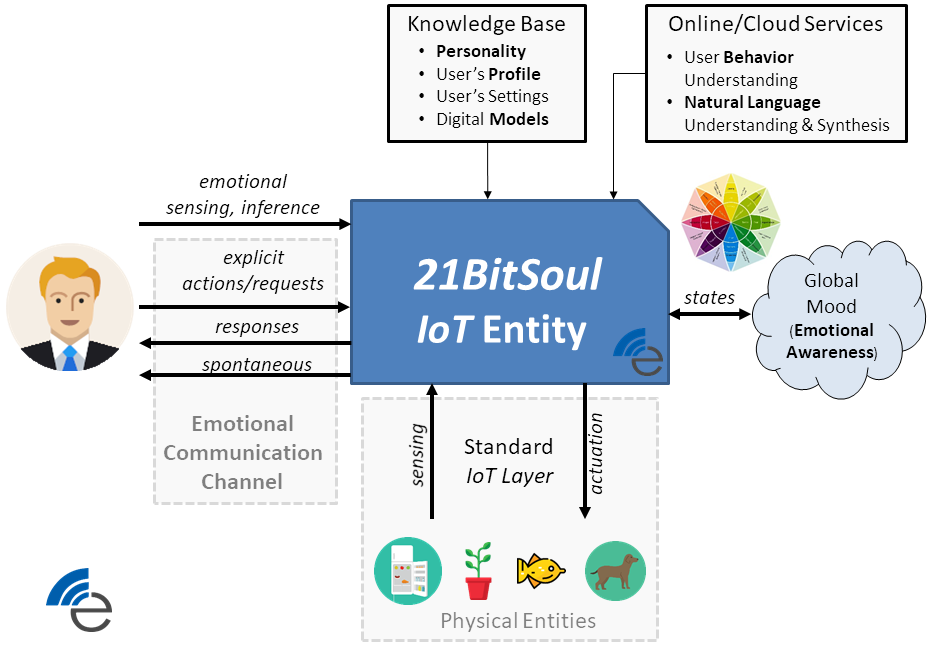In recent years, human society has experienced rapid changes in social relationships and the utilization of information and communication technologies. The COVID-19 pandemic of 2020 marked a significant shift in social dynamics: human interactions were reduced to sterile substitutes, accelerating our reliance on computer-mediated communication and human-machine interactions. While artificial intelligence (AI), the Internet of Things (IoT), and 5G networks have demonstrated their ability to support human activities from a functional and pragmatic standpoint, the risks and consequences of social and emotional detachment are becoming increasingly apparent.
Even as we still recover from the global pandemic, it is unlikely that traditional social models will fully return. Yet, our lives and well-being are deeply intertwined with the exchange of emotions and moods. In this context, the 21BitSoul project aims to develop a novel IoT service layer capable of exhibiting consciousness and personality to enhance the quality of human-machine interactions.
Existing and future IoT-enabled entities — such as plants, pets, and everyday objects — can be augmented with emotional and behavior-oriented capabilities through a cloud-based AI software overlay.
The oxymoronic title “21 Bits Soul: the Emotional Essence in the Internet of Things” is inspired by MacDougall’s 1907 experiment, wherein he posited that the soul possesses weight, specifically 21.3 grams. Despite the scientific community’s rejection of the adopted methodology and results, the argument gained popularity, aided by its depiction in film.
The 21BitSoul project is dedicated to exploring the Emotional Intelligence paradigm as applied to the IoT, aiming to enhance the quality of experience and humanize interactions between humanity and machines. The research is motivated by the rapid changes occurring in human society and information and communication technologies in recent years. In particular, the project focuses on synthesizing and emulating human-like digital personalities, which are envisioned as expressions of the IoT entity’s profile, its sensory inputs, and its personal, affective relationship with each end-user. While the recognition of human emotions is an active area of research, the elicitation of emotions remains a poorly investigated emerging topic. Thanks to the exponential growth of the IoT ecosystem and key enabling technologies, the time is ripe for designing and deploying a new paradigm in human-machine interactions.
